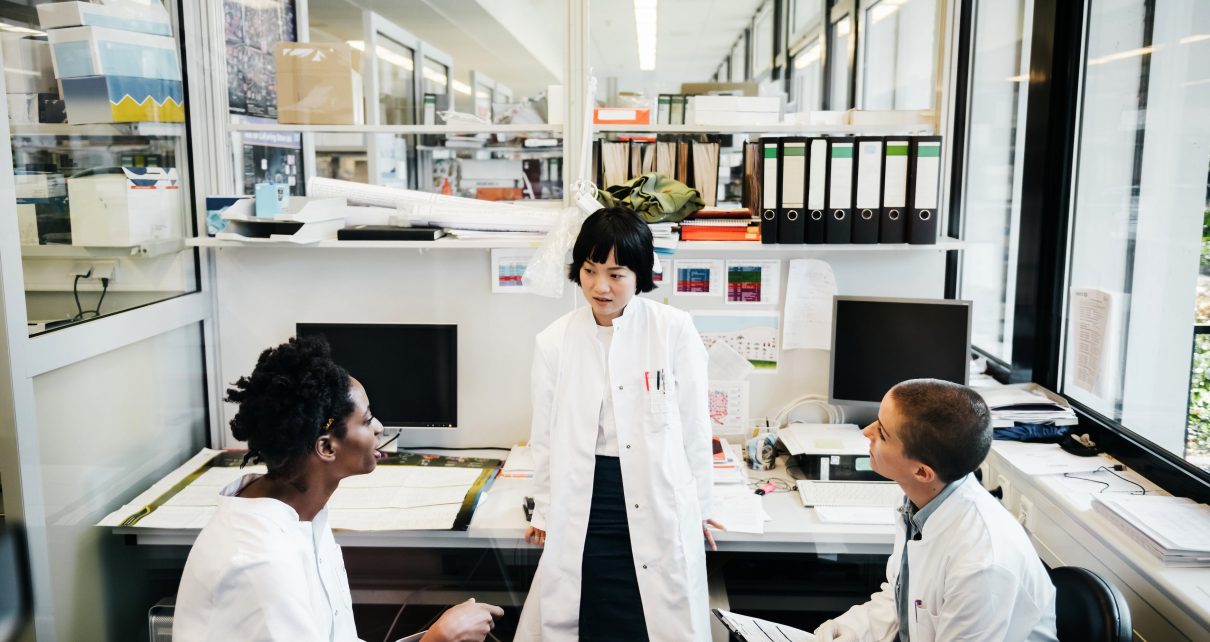In an attempt to cut short a brainstorming session with my collaborators, I joked recently that “we should stop exploring new research ideas before they turn into too much work.”
These circumstances were unusual. Most often, scientific projects do not stem from extensive brainstorming sessions. New papers simply follow previous ones. For example, in our first paper, my former graduate student, Nick Stone, chose to study what looked like an esoteric but fascinating problem: the disruption of a star that passes too close to a black hole. Our plan was that he would move on to other research areas afterwards. But this early paper sparked ideas for follow-up research, leading to seven additional papers that constituted Nick’s entire PhD thesis and defined the focus of his subsequent career. The fortunate emergence of related observational data at around the same time precipitated an exciting research frontier. As Louis Pasteur said: “chance favors only the prepared mind.”
Most of the time, in other words, scientists occupy themselves with their longstanding research programs, driven by a phenomenon first described by Johannes Kepler four centuries ago in a different context: inertia. But this pattern can be broken by unexpected breakthroughs. Recent examples in astrophysics include the detection of fluctuations in the cosmic microwave background in 1992; exoplanets orbiting Sun-like stars in 1995; the accelerated expansion of the Universe in 1998; fast radio bursts in 2007; gravitational waves in 2015; and interstellar objects in the solar system in 2017.
Breaking from the traditional patterns as a result of novel experimental findings is not a new phenomenon. Nineteenth century physicists never imagined anything like quantum mechanics based what they knew about classical physics. Even after quantum mechanics was formulated, Albert Einstein resisted its concept of “non-locality,” which says that components of a quantum unit that are separated far apart to “know about” each other faster than light can travel between them. The Einstein-Podolsky-Rosen paradox—a thought experiment which aimed to demonstrate that the classical concept of locality must be preserved through “reductio ad absurdum,” was proven wrong by subsequent experiments. Instead, the resulting new realization of nature shaped future research plans in quantum entanglement and its many applications, including quantum computing.
Following this precedent, anomalous experimental results can still lead to a surge in publications about possible interpretations and implications. For example, the recent report from the XENON1T experiment about a potential dark matter breakthrough inspired dozens of interpretation papers within a week. A previous report on an apparent tension between different measurements of the expansion rate of the Universe, also led to numerous models, most of which were ruled out after being compared by other data sets.
This raises an interesting strategic question: what fraction of a scientist’s time should be dedicated to revising research goals instead of pursuing past interests? Allocating too little time to brainstorming might lead either to stagnation or to a “random walk” in which chance plays a greater role than an educated response to changing circumstances. A strategy based on tradition is too inefficient to expedite discovery, since time is wasted on inconsequential research directions full of dead ends, similarly to the pitfalls of navigating with an outdated map.
On the other hand, spending too much time on planning can be analogous to consulting a large committee. It could lead to inaction because too many conflicting considerations cancel out. Risk-averse considerations and too much compromise are likely to yield a conservative research agenda that defines in advance what it will find. In order to discover the unexpected, it is necessary to take risks. Funding agencies must internalize this important lesson.
Since it is unclear in advance which research direction will bear fruit, scientific progress requires many independent explorers to survey a wide range of virgin lands with different tools. An overabundance of ideas is not a real problem, as one can always prioritize the order in which one pursues them. Sometimes, a conventional path leads to an unexpected breakthrough. But more often, a conventional path leads to a conventional result.
When foggy weather is in the forecast, one may adopt Robert Frost’s advice in following “The Road Not Taken,” such a road brings a fresh opportunity for unraveling hidden treasures. I find this lesson to be enriching when jogging through uncharted tracks in the woods near my home these days, following the spirit of social distancing.
Here’s hoping that the COVID-19 pandemic will lead to the unexpected benefit of fostering independent path-breaking journeys in science. Distancing from other individuals may place conventional societal rewards, such as promotions, honors or prizes, in their proper context of being the byproduct, and not the motivation, for the scientific endeavor.



